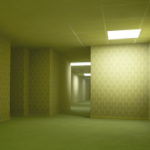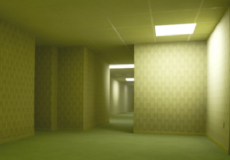

Home Alone
Home Alone is a first-person survival game where the player takes control of a child left alone in a house overnight. The game begins with the setting of an empty home, quiet and dimly lit, with instructions to lock doors, check windows, and prepare for the night. Players explore the house, turning on lights, checking the phone, and interacting with basic objects like drawers, switches, and doors. Early in the game, subtle signs appear that someone may be watching from outside. Footsteps, shadows, and sound cues create uncertainty about what’s coming.
Similiar games
Home Alone is a first-person survival game where the player takes control of a child left alone in a house overnight. The game begins with the setting of an empty home, quiet and dimly lit, with instructions to lock doors, check windows, and prepare for the night. Players explore the house, turning on lights, checking the phone, and interacting with basic objects like drawers, switches, and doors. Early in the game, subtle signs appear that someone may be watching from outside. Footsteps, shadows, and sound cues create uncertainty about what’s coming.
Defense and Player Decisions
As the night progresses, players are forced to react to threats using improvised tools around the house. Objects like lamps, chairs, or toys can be used to block entrances or slow down intruders. The layout of the house plays a major role—knowing where to hide, which exits are still safe, and how to create barriers becomes critical. There are no weapons or scripted attacks; everything relies on the player’s timing and how they manage resources like flashlight batteries or limited power. Some choices have consequences that affect how quickly the threat escalates.
Random Events and Ending Scenarios
Home Alone includes multiple outcomes based on how the player responds to the threat. Some runs end quickly if key windows are left unlocked or if noise draws attention. Others can last until morning if the player avoids confrontation and manages to stay hidden. The game uses random elements to keep each session different—locations of break-in attempts, timing of events, and availability of tools all change per round. Winning is possible but requires attention to every movement and sound throughout the night.
Discuss Home Alone



















